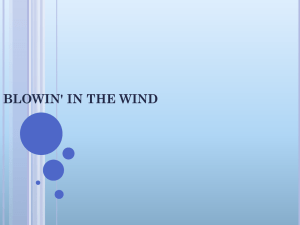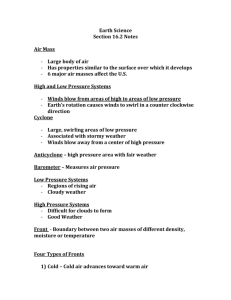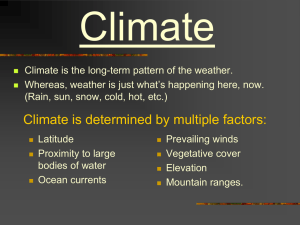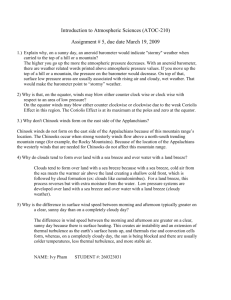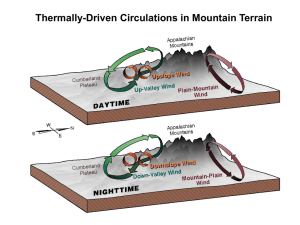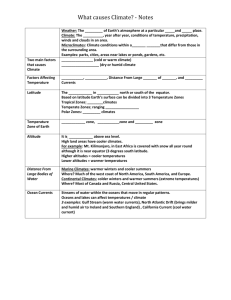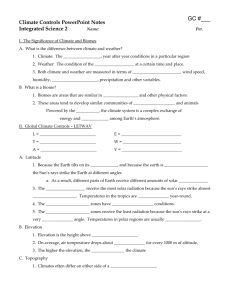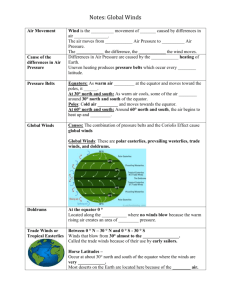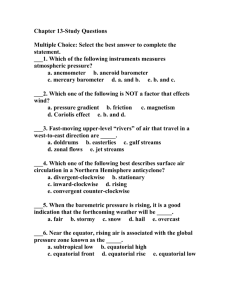Vertical Structure of the Atmosphere
advertisement
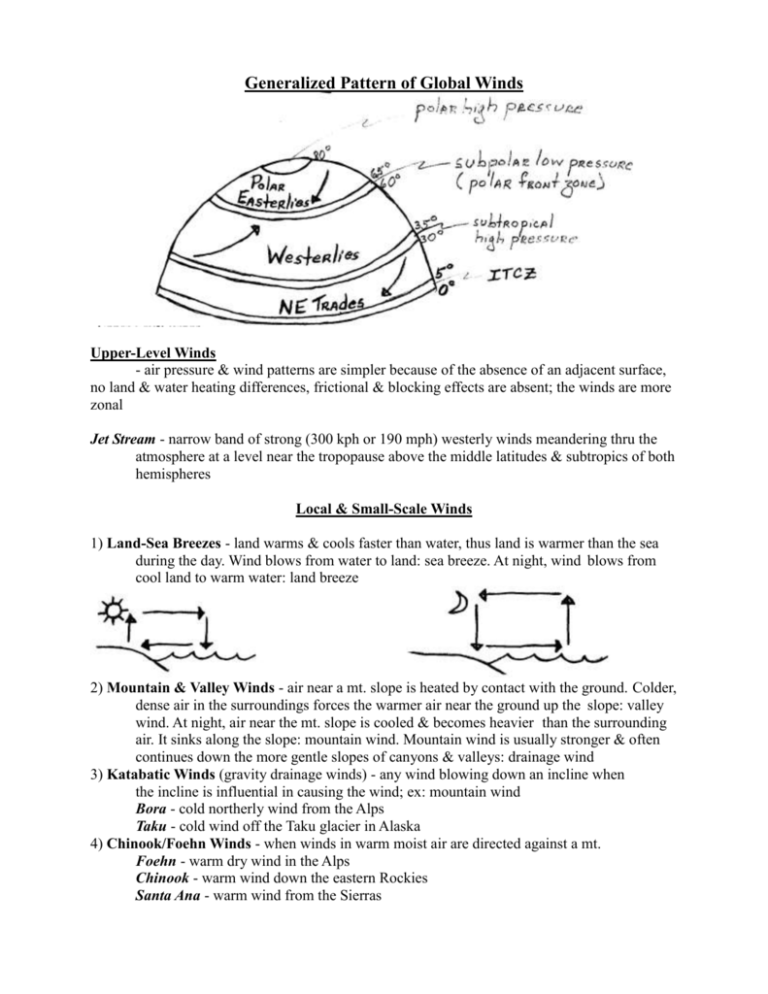
Generalized Pattern of Global Winds Upper-Level Winds - air pressure & wind patterns are simpler because of the absence of an adjacent surface, no land & water heating differences, frictional & blocking effects are absent; the winds are more zonal Jet Stream - narrow band of strong (300 kph or 190 mph) westerly winds meandering thru the atmosphere at a level near the tropopause above the middle latitudes & subtropics of both hemispheres Local & Small-Scale Winds 1) Land-Sea Breezes - land warms & cools faster than water, thus land is warmer than the sea during the day. Wind blows from water to land: sea breeze. At night, wind blows from cool land to warm water: land breeze 2) Mountain & Valley Winds - air near a mt. slope is heated by contact with the ground. Colder, dense air in the surroundings forces the warmer air near the ground up the slope: valley wind. At night, air near the mt. slope is cooled & becomes heavier than the surrounding air. It sinks along the slope: mountain wind. Mountain wind is usually stronger & often continues down the more gentle slopes of canyons & valleys: drainage wind 3) Katabatic Winds (gravity drainage winds) - any wind blowing down an incline when the incline is influential in causing the wind; ex: mountain wind Bora - cold northerly wind from the Alps Taku - cold wind off the Taku glacier in Alaska 4) Chinook/Foehn Winds - when winds in warm moist air are directed against a mt. Foehn - warm dry wind in the Alps Chinook - warm wind down the eastern Rockies Santa Ana - warm wind from the Sierras

